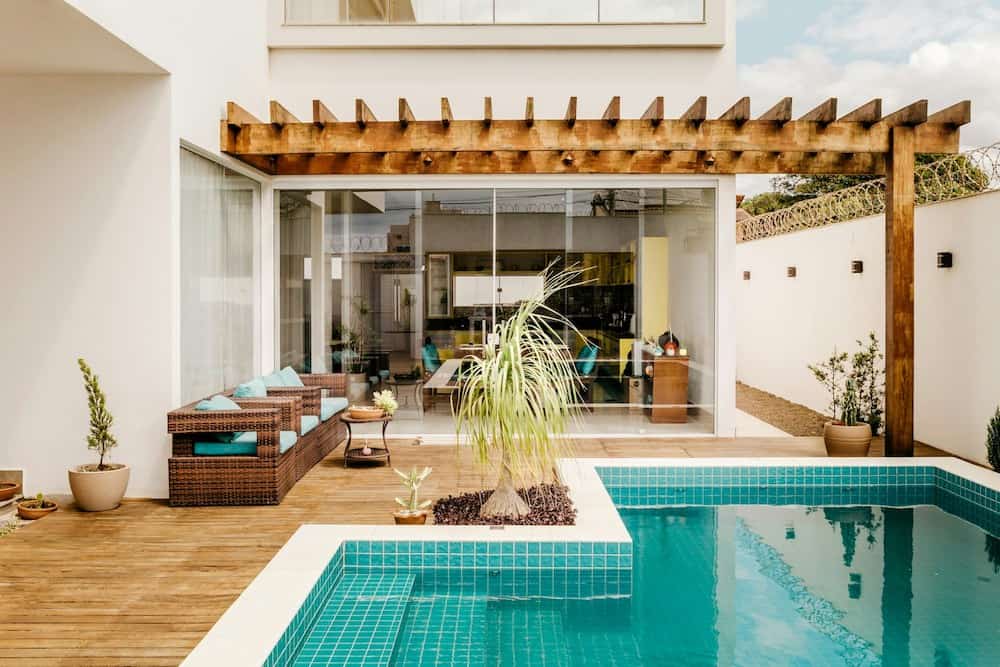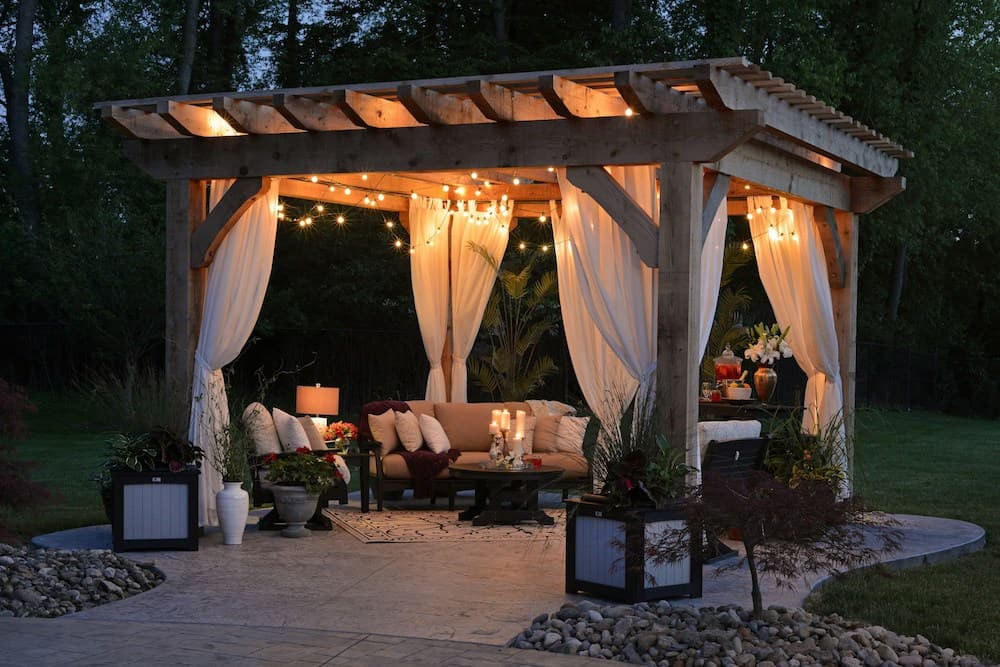Building a pergola is a beautiful addition to any outdoor space, providing shade and style. Whether you want to enhance your garden, patio, or backyard, building your pergola can be a rewarding project for beginners. In this beginner’s guide, we will explore the basics of pergola construction, from understanding its purpose to step-by-step construction instructions.

Understanding the Basics of a Pergola
Before diving into the construction process, it’s important to have a clear understanding of what exactly a pergola is. A pergola is an outdoor structure consisting of vertical posts and an open roof made of beams and rafters. It provides partial shade and a sense of enclosure, creating a cozy and inviting atmosphere for outdoor activities.
Originating from ancient Egypt, pergolas have a rich history dating back to the Renaissance period in Italy, where they were used to support climbing plants. Over time, pergolas have evolved into versatile structures that blend functionality with aesthetics, becoming a staple in modern outdoor design.
What is a Pergola?
A pergola is a versatile outdoor structure that can be used in a variety of ways. It can serve as a decorative element, adding charm and character to your outdoor space. Additionally, it can provide a shaded area for outdoor seating or dining, making it a perfect addition to a garden or patio.
With its open design, a pergola allows for adequate airflow, creating a comfortable environment for relaxation and social gatherings. The beams and rafters of a pergola can be adorned with hanging plants, string lights, or fabric drapes to enhance its visual appeal and create a personalized outdoor oasis.
Benefits of Having a Pergola
There are several benefits to having a pergola in your outdoor space. Firstly, it provides shade, allowing you to enjoy the outdoors even on hot summer days. It also offers protection from the elements, allowing you to enjoy your outdoor space even during light rain. Moreover, pergolas can add value to your property and enhance its overall aesthetics.
Furthermore, a pergola can act as a focal point in your landscape design, defining separate areas within your outdoor space such as a lounging area, a dining area, or a pathway. Its versatility allows for customization to suit your specific needs and preferences, whether you prefer a minimalist modern design or a more traditional and ornate style.

Planning Your Pergola Project
Before you start building your pergola, it’s important to plan your project effectively. This involves determining the purpose of your pergola and selecting the right location.
Adding a pergola to your outdoor space can not only enhance the aesthetics of your backyard but also provide a functional and versatile area for various activities. Whether you envision it as a peaceful retreat for reading and relaxation or as an elegant setting for outdoor entertaining, defining the purpose of your pergola is the first step towards bringing your vision to life.
Determining the Purpose of Your Pergola
Consider how you intend to use your pergola. Are you looking to create a cozy seating area or a dining space? Understanding the purpose of your pergola will help you determine its size, shape, and design.
The design possibilities for pergolas are endless, ranging from traditional styles with intricate lattice patterns to modern structures with clean lines and minimalist features. By aligning the purpose of your pergola with your design preferences, you can create a harmonious outdoor space that complements your home’s architecture and landscaping.
Choosing the Right Location
When selecting the location for your pergola, consider factors such as sunlight, wind patterns, and existing landscaping. You’ll want to choose a location that provides the desired amount of shade while also taking into account any nearby obstacles or structures.
Furthermore, the orientation of your pergola can impact its functionality throughout the day. Positioning it to capture the morning sun for a cozy breakfast nook or to provide shade during the hottest part of the day for comfortable outdoor gatherings can significantly enhance your outdoor living experience. Additionally, integrating climbing plants or vines into your pergola design can not only add a touch of natural beauty but also offer additional shade and privacy as they mature over time.
Designing Your Pergola
Designing your pergola involves selecting the right materials and deciding on the size and shape that best suits your needs. A pergola is not only a functional addition to your outdoor space but also a stylish one that can enhance the overall look of your home.
When designing your pergola, it’s essential to consider not only the practical aspects but also the aesthetic appeal. By carefully choosing the materials, size, and shape, you can create a pergola that not only provides shade and comfort but also adds beauty and character to your outdoor area.
Selecting the Right Materials
There are various materials to choose from when building a pergola. Common options include wood, metal, and vinyl. Each material has its own advantages and aesthetics, so consider your budget, desired look, and maintenance requirements before making a decision. Wood is a popular choice for its natural warmth and versatility, while metal offers a modern and sleek appearance. Vinyl, on the other hand, is low-maintenance and durable, perfect for those looking for a hassle-free option.
When selecting the materials for your pergola, think about how they will complement the existing architecture and landscaping of your home. You want the pergola to blend seamlessly with its surroundings while still standing out as a focal point in your outdoor space.
Deciding on the Size and Shape
The size and shape of your pergola will depend on the available space and the intended use. Consider factors such as the number of people you want to accommodate, the furniture you plan to include, and the overall aesthetics you wish to achieve. Take measurements and sketch out different designs to find the perfect fit.
When deciding on the size of your pergola, think about how it will be used throughout the year. Will it be a cozy spot for intimate gatherings, a shaded retreat for reading and relaxation, or a functional space for outdoor dining and entertaining? By envisioning how you will use the pergola, you can tailor its size and shape to best suit your lifestyle and needs.
Preparing for Construction
Before you start building, it’s important to gather the necessary tools and prepare the ground.
Gathering Necessary Tools
Building a pergola requires some basic tools such as a measuring tape, level, drill, saw, and fasteners. Make sure you have all the necessary tools before starting the construction process.
Preparing the Ground
Clear the area where you plan to construct your pergola. Remove any rocks, roots, or debris and level the ground as much as possible. This will ensure a stable and even foundation for your pergola.
Step-by-Step Pergola Construction
Now that you’ve planned and prepared, it’s time to start building your pergola. This step-by-step guide will walk you through the construction process.
Setting the Posts
Begin by marking the locations of the vertical posts. Dig holes deep enough to accommodate one-third of the post length and fill them with concrete. Insert the posts into the holes and use a level to ensure they are plumb. Allow the concrete to set before proceeding to the next step.
Installing the Beams and Rafters
After the posts have set, it’s time to install the horizontal beams and rafters. Attach the beams to the posts, ensuring they are level and securely fastened. Then, attach the rafters perpendicular to the beams, evenly spacing them apart. Secure all connections with appropriate fasteners.
Once you’ve completed these steps, your pergola is ready for use. You can leave it as is or add additional features such as climbing plants, string lights, or curtains to personalize the space. With careful planning and attention to detail, building a pergola can be a rewarding and enjoyable project for beginners.
Check out these other summer outdoor projects.



